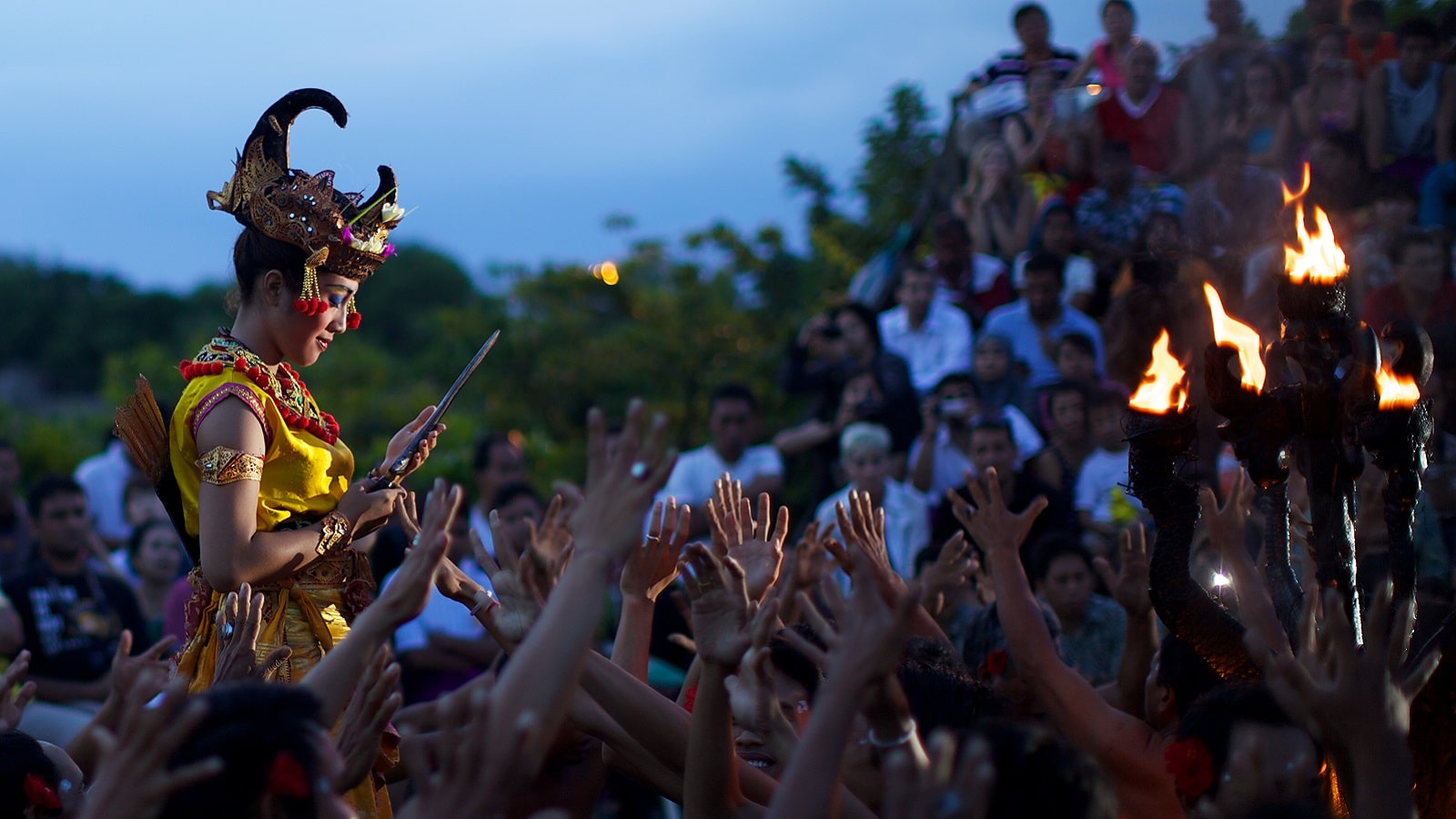
Exploring Uluwatu Temple: A Cliffside Marvel with Cultural Splendor
Perched on the southwestern tip of Bali’s Bukit Peninsula, Uluwatu Temple stands as a breathtaking testament to the island’s cultural and natural grandeur. This cliffside temple, with its commanding views of the Indian Ocean, not only captivates with its architectural elegance but also hosts the mesmerizing traditional Kecak dance.
A Tranquil Cliffside Oasis
Uluwatu Temple is renowned for its dramatic location atop towering cliffs, offering panoramic vistas of the vast ocean below. The temple’s setting creates an atmosphere of tranquility, inviting visitors to revel in the serenity of the surroundings. The rhythmic sounds of crashing waves against the cliffs provide a soothing backdrop to the cultural richness that unfolds within the temple grounds.
Architectural Grandeur and Spiritual Significance
As you enter the temple complex, the traditional Balinese architecture reveals itself in intricate stone carvings and ornate gateways. Uluwatu is one of Bali’s six key temples, each established to protect the island from evil spirits. The temple’s placement at the edge of a cliff emphasizes its spiritual significance, inviting contemplation and reverence.
Kecak Dance: A Cultural Extravaganza
Uluwatu Temple is not just a site for architectural marvel but also a stage for the captivating Kecak dance. As the sun sets over the horizon, the temple’s open-air amphitheater comes alive with the rhythmic chants and mesmerizing movements of the Kecak performers. This traditional Balinese dance, accompanied by a chorus of vocalized “cak” sounds, narrates the Ramayana epic, providing a cultural spectacle that enchants audiences.
Sunset Serenade at Uluwatu
One of the most enchanting experiences at Uluwatu Temple is witnessing the sunset. The temple’s cliffside location provides an unobstructed view of the sun dipping below the horizon, casting a warm glow over the temple and the surrounding ocean. Visitors gather to witness this daily spectacle, making it a moment of serenity and natural beauty.
Conservation Efforts and Responsible Tourism
Uluwatu Temple, like many cultural and natural landmarks, faces the challenges of tourism impact. Conservation efforts are in place to preserve the temple’s integrity and surrounding environment. Visitors are encouraged to explore responsibly, respecting the sacredness of the site and contributing to its long-term sustainability.
Uluwatu Temple: A Gateway to Balinese Mythology
Delve deeper into the mythological roots of Uluwatu by visiting Uluwatu Temple: Cliffside temple with traditional Kecak dance. This online resource provides additional insights into the temple’s cultural significance, travel tips, and a virtual journey that complements the enchanting experiences awaiting you at this Balinese gem.
Cultural Etiquette and Temple Etiquette
When visiting Uluwatu Temple, it’s essential to adhere to cultural etiquette. Dress modestly, and don a sarong as a sign of respect. The temple grounds are inhabited by mischievous monkeys, so securing personal belongings is advisable. Additionally, attending a Kecak dance performance provides not only entertainment but also a deeper connection to Balinese cultural traditions.
Balinese Oceanfront Dining Experience
After exploring the temple and enjoying the cultural performance, indulge in a Balinese dining experience by the ocean. Several cliffside restaurants near Uluwatu Temple offer delectable local cuisine with unparalleled views. It’s a perfect way to conclude your day of cultural immersion.
Uluwatu Temple: A Harmonious Fusion of Nature and Culture
Uluwatu Temple beckons travelers seeking a harmonious blend of cultural exploration and natural beauty. The cliffside setting, the captivating Kecak dance, and the spiritual ambiance make it a must-visit destination for those yearning to experience the soul of Bali.


